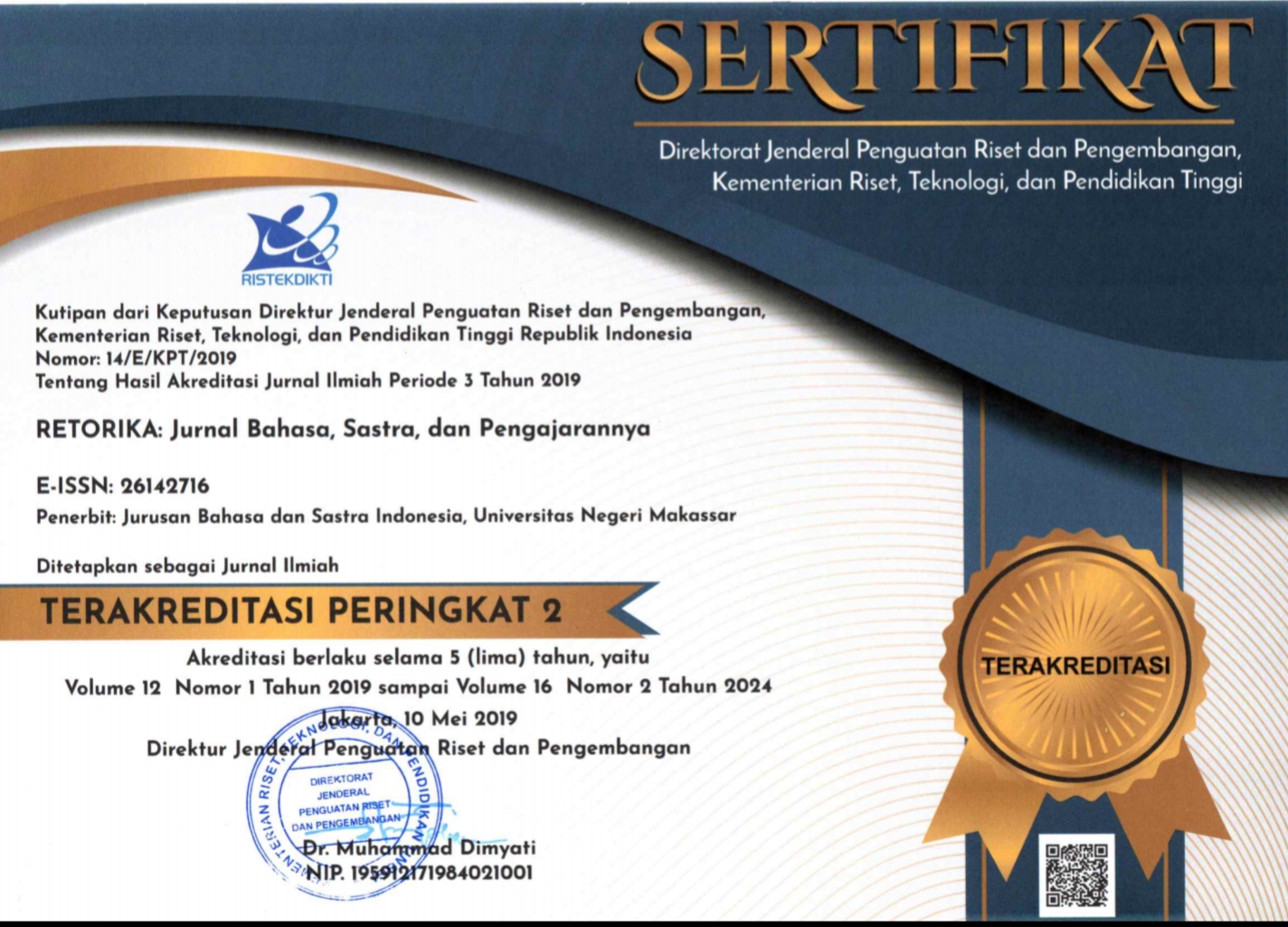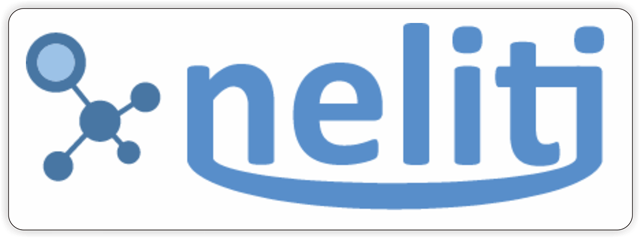OPPORTUNITIES AND CHALLENGES OF THE ONLINE LEARNING IN WEST SUMATERA: WHAT STUDENTS SAY ABOUT IT?
(1) Universitas PGRI Sumatera Barat
(2) UIN Sjech M. Djamil Djambek Bukittinggi
(*) Corresponding Author
DOI: https://doi.org/10.26858/retorika.v16i1.23547
Abstract
Keywords
Full Text:
PDFReferences
Al-Salman, S., & Haider, A. S. (2021). Jordanian University Students’ Views on Emergency Online Learning During Covid-19. Online Learning Journal, 25(1), 286–302. https://doi.org/10.24059/olj.v25i1.2470
Alasmari, T. (2021). Learning in the COVID-19 Era: Higher Education Students and Faculty’s Experience with Emergency Distance Education. International Journal of Emerging Technologies in Learning, 16(9), 40–62. https://doi.org/10.3991/ijet.v16i09.20711
Alchamdani, A., Fatmasari, F., Rahmadani Anugrah, E., Putri Sari, N., Putri, F., & Astina, A. (2020). The Impact of Covid19 Pandemic on Online Learning Process in the College at Southeast Sulawesi. Jurnal Kesehatan Lingkungan, 12(1), 129–133. https://doi.org/10.20473/jkl.v12i1si.2020.129-136
Almusharraf, N. M., & Khahro, S. H. (2020). Students’ Satisfaction with Online Learning Experiences during the COVID-19 Pandemic. International Journal of Emerging Technologies in Learning, 15(21), 246–267. https://doi.org/10.3991/ijet.v15i21.15647
Arkorful, V., & Abaidoo, N. (2014). The Role of E-Learning, Advantages and Disadvantages of Its Adoption In Higher Education. International Journal of Educational and Research, 2(12), 397–410.
Bozkurt, A. (2019). From Distance Education to Open and Distance Learning: A Holistic Evaluation of History, Definitions, and Theories. In Sisman-Ugur & G. Kurubacak (Eds.), Handbook of Research on Learning in the Age of Transhumanism (pp. 252–273). Hershey: PA IGI Global. https://doi.org/10.4018/978-1-5225-8431-5.ch016
Bušelić, M. (2012). Distance Learning-Concepts and Contributions. Oeconomica Jadertina, 23–34.
Coman, C., Țîru, L. G., Meseșan-Schmitz, L., Stanciu, C., & Bularca, M. C. (2020). Online Teaching and Learning in Higher Education During the Coronavirus Pandemic: Students’ Perspective. Sustainability (Switzerland), 12(24), 1–24. https://doi.org/10.3390/su122410367
Denis, K., & Simon, W. (2019). Students’ Perceptions About a Distance Learning Programme: A Case of the Open, Distance and E-Learning Programme at Kyambogo University, Uganda. International Journal of Advance Research, 5(1), 388–394. Retrieved from https://www.ijariit.com/manuscript/students-perceptions-about-a-distance-learning-programme-a-case-of-the-open-distance-and-e-learning-programme-at-kyambogo-university-uganda.
El Firdoussi, S., Lachgar, M., Kabaili, H., Rochdi, A., Goujdami, D., & El Firdoussi, L. (2020). Assessing Distance Learning in Higher Education During the COVID-19 Pandemic. Education Research International, 2020(December), 1–13. https://doi.org/10.1155/2020/8890633
Eldokhny, A. A., & Drwish, A. M. (2021). Effectiveness of Augmented Reality in Online Distance Learning at the Time of the COVID-19 Pandemic. International Journal of Emerging Technologies in Learning, 16(9), 198–218. https://doi.org/10.3991/ijet.v16i09.17895
Farah, M. A., & Jabari, S. "Muhammad G. (2020). Interaction in Online Learning Environment during Covid -19: Factors behind Lack of Interaction and Ideas for Promoting it. Bulletin of Advanced English Studies, 5(2), 47–56. https://doi.org/10.31559/baes2020.5.2.3.
Fidalgo, P., Thormann, J., Kulyk, O., & Lencastre, J. A. (2020). Students’ Perceptions on Distance Education: A Multinational Study. International Journal of Educational Technology in Higher Education, 17(1), 1–18. https://doi.org/10.1186/s41239-020-00194-2.
Ghasem, N., & Ghannam, M. (2021). Challenges, Benefits and Drawbacks of Chemical Engineering Online Teaching During Covid-19 Pandemic. Education for Chemical Engineers, 36, 107–114. https://doi.org/10.1016/j.ece.2021.04.002
Hamid, R., Sentryo, I., & Hasan, S. (2020). Online learning and Its Problems in the Covid-19 Emergency Period. Jurnal Prima Edukasia, 8(1), 86–95. https://doi.org/10.21831/jpe.v8i1.32165.
Hermanto, Y. B., & Srimulyani, V. A. (2021). The Challenges of Online Learning during Pandemic. Wanastra: Jurnal Bahasa Dan Sastra, 54(1), 46–57. https://doi.org/10.31294/w.v13i1.9759.
Hermawan. Daniel. (2021). The Rise of E-Learning in COVID-19 Pandemic in Private University: Challenges and Opportunities. IJORER : International Journal of Recent Educational Research, 2(1), 86–95. https://doi.org/10.46245/ijorer.v2i1.77.
Isman, A. (1999). Distance Education. Turkey: Degisim Publishing Company.
Isman, A., Altinay, Z., & Altinay, F. (2004). Roles of the Students and Teachers in Distance Education. Turkish Online Journal of Distance Education, 5(4). https://doi.org/10.17718/TOJDE.23552.
Isman, A., Dabaj, F., & Altinay, F. (2004). The Evaluation of Students’ Perceptions of Distance Education. The Turkish Online Journal of Educational Technology-TOJET, 3(3), 55–61.
Jogezai, N. A., Baloch, F. A., Jaffar, M., Shah, T., Khilji, G. K., & Bashir, S. (2021). Teachers’ Attitudes Towards Social Media (SM) Use in Online Learning Amid the Covid-19 Pandemic: The Effects of SM Use by Teachers and Religious Scholars During Physical Distancing. Heliyon, 7(4), e06781. https://doi.org/10.1016/j.heliyon.2021.e06781.
King, F. B., Young, M. F., Richmond, K., & Schrader, P. (2001). Defining Distance Learning and Distance Education, (January).
Lapitan, L. D., Tiangco, C. E., Sumalinog, D. A. G., Sabarillo, N. S., & Diaz, J. M. (2021). An Effective Blended Online Teaching and Learning Strategy During the Covid-19 Pandemic. Education for Chemical Engineers, 35(May 2020), 116–131. https://doi.org/10.1016/j.ece.2021.01.012.
Litvinova, T., Andriutsa, N., & Movchun, V. (2021). Developing Students’ Intercultural Communicative Competence Through Online Learning. International Journal of Emerging Technologies in Learning, 16(8), 162–172. https://doi.org/10.3991/ijet.v16i08.18947.
Long, N. N., & Khoi, B. H. (2020). The Intention to Study Using Zoom During the SARSCoV-2 Pandemic. International Journal of Emerging Technologies in Learning, 15(21), 195–216. https://doi.org/10.3991/ijet.v15i21.16777.
Messo, I. N. (2014). Students’ Perception on the Quality of Open and Distance Learning Programmes in Tanzania. Huria - Journal of the Open University of Tanzania, 18(1), 119–134.
Mursyidin, Parlindungan, F., & Rahmatillah, R. (2021). Challenges in Online Learning During Covid-19 Pandemic: Lesson Learned from Universities in Indonesia. TESOL International Journal, 16(4), 110–126. Retrieved from http://www.tesol-international-journal.com.
Nguyen, T. (2015). The Effectiveness of Online Learning: Beyond No Significant Difference and Future Horizons. MERLOT Journal of Online Learning and Teaching, 11(2), 309–319.
O’Malley, J., & McCraw, H. (1999). Students Perceptions of Distance Learning, Online Learning and the Traditional Classroom. Online Journal of Distance Learning Administration, 2(4), 1–10.
Osei, C. K. (2010). Perceptions of Students Towards Use of Distance Learning: The Case in an Executive Masters Business Program in Ghana. Online Journal of Distance Learning Administration, XIII(II).
Paudel, P. (2020). Online Education: Benefits, Challenges and Strategies During and After COVID-19 in Higher Education. International Journal on Studies in Education, 3(2), 70–85. https://doi.org/10.46328/ijonse.32.
Perguna, L. A., Apriyanti, N., & Kurniasih, D. (2021). Alternative Online Learning Using Social Media as a Panacea. International Journal of Emerging Technologies in Learning, 16(7), 257–265. https://doi.org/10.3991/ijet.v16i07.21209.
Perifanou, M., Economides, A. A., & Tzafilkou, K. (2021). Teachers’ Digital Skills Readiness During COVID-19 Pandemic. International Journal of Emerging Technologies in Learning, 16(8), 238–251. https://doi.org/10.3991/ijet.v16i08.21011
Popescu, E. F., Tătucu, M., & Dobromirescu, V. (2021). Students ’ Well-being in Online Education in Covid-19 Context. International Journal of Educational and Research, 9(2), 1–10.
Qazi, A., Qazi, J., Naseer, K., Zeeshan, M., Qazi, S., Abayomi-Alli, O., … Haruna, K. (2021). Adaption of Distance Learning to Continue the Academic Year Amid COVID-19 Lockdown. Children and Youth Services Review, 126, 106038. https://doi.org/10.1016/j.childyouth.2021.106038.
Ramadhanti, D., Ghazali, A. S., Hasanah, M., Harsiati, T., & Yanda, D. P. (2020). The Use of Reflective Journal as a Tool for Monitoring of Metacognition Growth in Writing. International Journal of Emerging Technologies in Learning (IJET), 15(11), 162–187. https://doi.org/10.3991/ijet.v15i11.11939.
Ramadhanti, D., Yanda, D. P., Basri, I., & Abdurahman. (2020). Modul Pembelajaran Menulis Cerpen sebagai Penunjang Pembelajaran Jarak Jauh untuk SMP (A Learning Module of Short Story Writing as a Tool of Distance Learning for Junior High School). SALINGKA, 17(2), 146–163. https://doi.org/10.26499/salingka.v17i2.43.
Ramadhanti, D., Yanda, D. P., & Yenti, E. (2020). Peran Perpustakaan sebagai Pendukung Pembelajaran Jarak Jauh di Masa Pandemi Covid-19. Libraria: Jurnal Perpustakaan, 8(1), 1–30.
Sahin, I., & Shelley, M. (2008). Considering Students’ Perceptions: The Distance Education Student Satisfaction Model. Educational Technology and Society, 11(3), 216–223.
Shatri, K., Buza, K., & Bunjaku, F. (2021). Teachers’ Perception on the Benefits of Using Online Resources. International Journal of Emerging Technologies in Learning (IJET), 16(11), 289–COV307. https://doi.org/10.3991/ijet.v16i11.21407.
Shurygin, V., Berestova, A., Litvinova, T., Kolpak, E., & Nureyeva, A. (2021). Universal Models and Platforms in E-Learning. International Journal of Emerging Technologies in Learning, 16(9), 63–75. https://doi.org/10.3991/ijet.v16i09.19697.
Songkram, N., Songkram, N., Chootongchai, S., & Samanakupt, T. (2021). Developing Students’ Learning and Innovation Skills Using the Virtual Smart Classroom. International Journal of Emerging Technologies in Learning, 16(4), 34–51. https://doi.org/10.3991/ijet.v16i04.15221.
Souabi, S., Retbi, A., Idrissi, M. K., & Bennani, S. (2021). Towards an Evolution of E-Learning Recommendation Systems: From 2000 to Nowadays. International Journal of Emerging Technologies in Learning, 16(6), 286–298. https://doi.org/10.3991/ijet.v16i06.18159.
Spencer, D., & Temple, T. (2021). Examining Students’ Online Course Perceptions and Comparing Student Performance Outcomes in Online and Face-to-Face Classrooms. Online Learning Journal, 25(2), 233–261. https://doi.org/10.24059/olj.v25i2.2227.
Tang, Y. M., Chen, P. C., Law, K. M. Y., Wu, C. H., Lau, Y. yip, Guan, J., … Ho, G. T. S. (2021). Comparative Analysis of Student’s Live Online Learning Readiness During the Coronavirus (COVID-19) Pandemic in the Higher Education Sector. Computers and Education, 168(November 2020), 104211. https://doi.org/10.1016/j.compedu.2021.10421.
Tribunella, T. (2004). Comparing Online And In-Class Students: Perceptions, Demographics And Grades In MBA Accounting Classes. Journal of College Teaching & Learning (TLC), 1(7), 61–76. https://doi.org/10.19030/tlc.v1i7.1969.
Ulfa, S., & Fatawi, I. (2020). Predicting Factors That Influence Students’ Learning Outcomes Using Learning Analytics in Online Learning Environment. International Journal of Emerging Technologies in Learning, 16(1), 4–17. https://doi.org/10.3991/IJET.V16I01.16325.
UNICEF. (2020). Covid-19 dan Anak-Anak di Indonesia.
Ushanov, A., Morgunova, N., & Petunina, I. (2021). Internet Technologies in Distance Education. International Journal of Emerging Technologies in Learning, 16(10), 85–95. https://doi.org/10.3991/ijet.v16i10.19129.
World Bank. (2020). Guidance Note on Education Systems’ Response to COVID19 How does ID19 Impact Education?, 1–6. Retrieved from https://www.cdc.gov/coronavirus/2019-ncov/downloads/considerations-for-school-closure.pdf.
Yoshida, M., & Thammetar, T. (2021). Education Between GovTech and Civic Tech. International Journal of Emerging Technologies in Learning, 16(4), 52–68. https://doi.org/10.3991/ijet.v16i04.18769.
Yulia, H. (2020). Online Learning to Prevent the Spread of Pandemic Corona Virus in Indonesia. ETERNAL (English Teaching Journal), 11(1), 48–56. https://doi.org/10.26877/eternal.v11i1.6068.
Article Metrics
Abstract view : 168 times | PDF view : 41 timesRefbacks
- There are currently no refbacks.
Copyright (c) 2023 Dina Ramadhanti, Diyan Permata Yanda

This work is licensed under a Creative Commons Attribution-NonCommercial 4.0 International License.
Published by:
Department of Indonesian Language, Faculty of Languages and Literature, Universitas Negeri Makassar in cooperate with Asosiasi Dosen Bahasa dan Sastra Indonesia (ADOBSI) and Ikatan Program Studi Pendidikan Bahasa dan Sastra Indonesia (IKAPROBSI).
Address: Department of Indonesian Language Office, DG Building Second Floor, UNM Parangtambung, Daeng Tata Raya Street, Makassar, South Sulawesi, Indonesia
 Email: retorika@unm.ac.id
Email: retorika@unm.ac.id

RETORIKA: Jurnal Bahasa, Sastra,dan Pengajarannya is licensed under a Creative Commons Attribution-NonCommercial 4.0 International License.
















